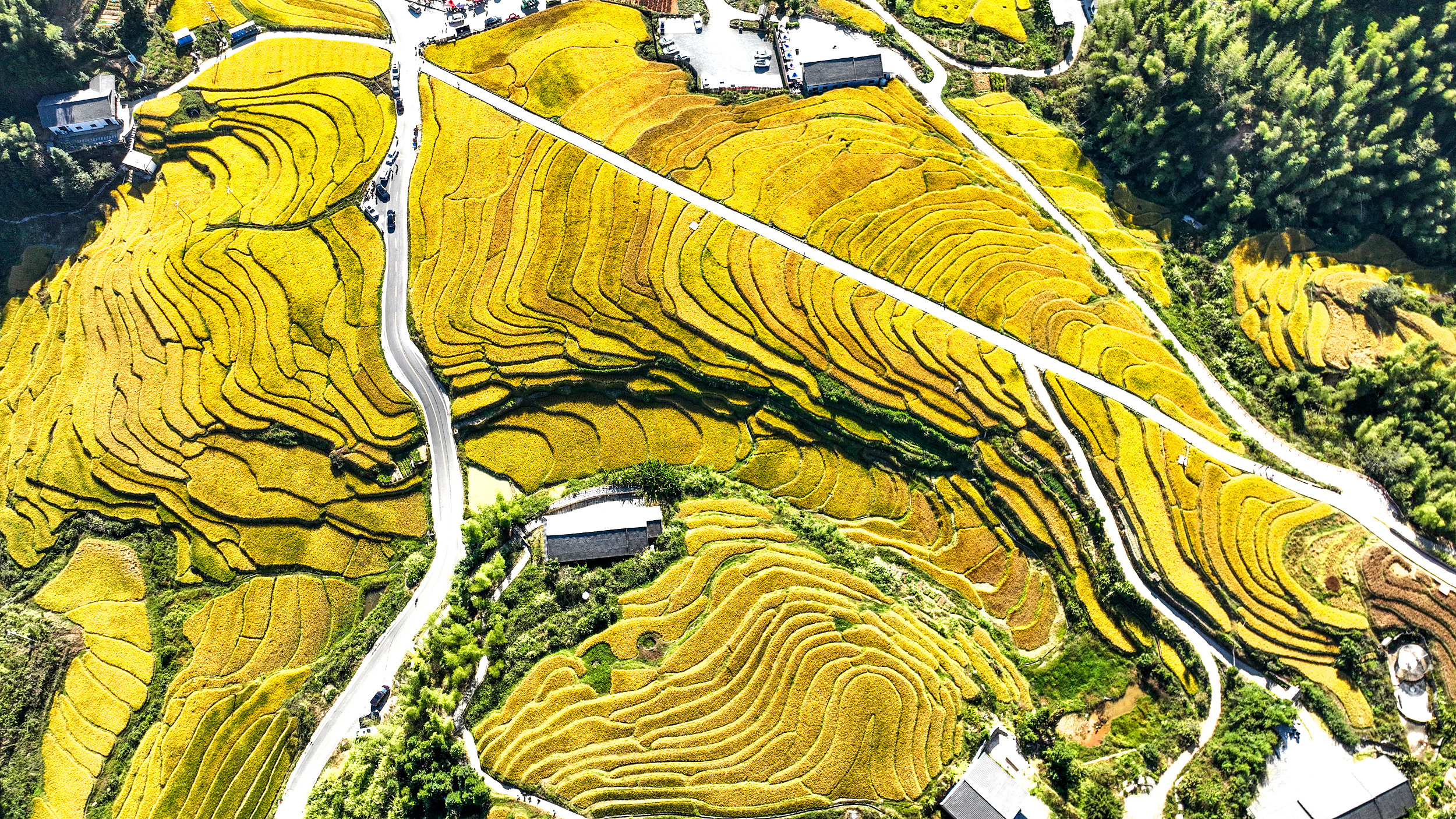
A bird view of the Chongyi Shangbao Terraces, Chongyi county, Jiangxi province. (PHOTO:VCG)
By?BI?Weizi
The Chongyi Shangbao Terraces, located in the mountainous region of Chongyi county, east China's Jiangxi province, cover an area of about 3,400 hectares. Originally constructed on steep slopes during the Song Dynasty (960-1279) and later refined during the Ming Dynasty (1368-1644) and Qing Dynasty (1644-1911), the terraces utilize innovative irrigation and ecological systems to help prevent floods and droughts.
The terraces are specifically located around Huaxian Peak, the second highest peak in south of Jiangxi province, with an altitude of 1,741 meters. Thousands of hectares of terraced fields are scattered around the peak in the area of Nanliu, Lianghe and Chishui. The vertical drop of the terraces is nearly 1,000 meters, with the highest field at 1,260 meters above sea level.
Shangbao Terraces are shaped by mountains and developed by water. It is not only a perfect farmland water conservancy and irrigation engineering system, but also a good ecological protection system. According to the demand of water transmission, the Hakka ethnic group ancestors built dams, reservoirs and other facilities to regulate, control and distribute water to effectively cope with floods and droughts, which has promoted local land reclamation and agricultural production.
The Shangbao Terraces are a testimony to the scientific farming culture of the Hakka ancestors living in harmony with nature. It was inscribed as a Globally Important Agricultural Heritage System and selected as one of the World Irrigation Engineering Heritage Sites in 2018 and 2022 respectively.
The trio will conduct a series of experiments in fields such as life science, fluid physics, combustion science and materials science. Notably, this is the first time that fruit flies have been taken on a Chinese space mission as experimental subjects. What made scientists choose fruit flies? What experiment will they undergo?
